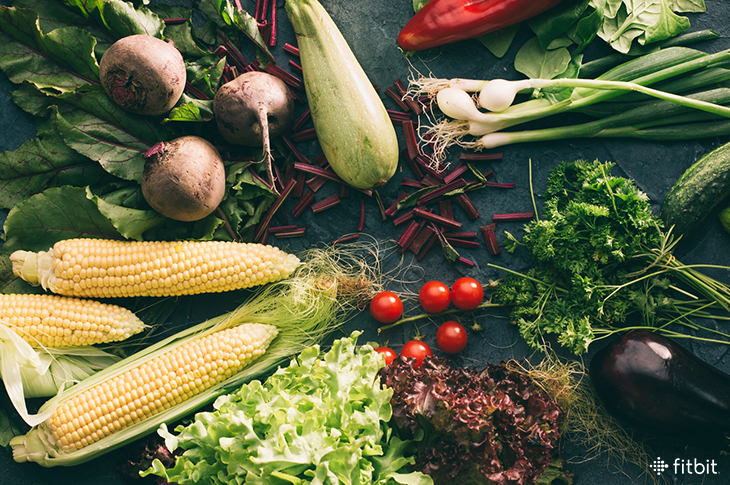
As a general guideline, nutritionists recommend filling half your plate with fresh produce, and only a quarter each of protein and grains. When that’s the goal, it makes sense to think of vegetables first. But too often, they’re an afterthought. You put together your whole dinner, and only then realize you forgot to get some plants on your plate. When you’re scrambling with last-minute prep, it’s no wonder broccoli and Brussels feel like punishment!
It’s time to flip your strategy around. Give veggies the love and respect they deserve, by focusing on easy cooking methods, healthy fats, and robust seasonings that concentrate and highlight delicious natural flavors. Here are six tips and tricks to get the best out of your veggies. Eating your greens has never tasted so good.
1. Try dry heat methods
Have you ever boiled a Brussels sprout? It’s a surefire way to get a squishy, stinky little cabbage. Panfrying or roasting, however, reveals a whole different vegetable, with crinkled leaves, crispy edges, and a deliciously nutty flavor. For most veggies, you can cut them into bite-size pieces, toss with extra-virgin olive oil, sprinkle with salt and pepper, and roast at 400°F (200°C) until golden at the edges and tender when pierced with a paring knife. A hot skillet or grill works the same magic, using hot, dry heat to concentrate flavors and caramelize surfaces.
2. Cook just until tender-crisp
There are times when you want your veggies totally melt-in-your-mouth succulent—when you’re braising eggplant or tomatoes in a flavorful, slow-simmered sauce, for instance. But if you’re using a quick-cooking method, like sautéing or stir-frying, it’s a good idea to leave a little snap. Asparagus, broccoli, and sugar snap peas only need a few minutes to cook. They’re done when they’re bright green and tender, but still firm to the bite.
3. Add a dash of healthy fat
Fat is full of flavor, and since healthy fats are part of a balanced diet, there’s no reason to deprive your veggies. Adding a dash of healthy oils also means you’ll absorb more valuable antioxidants from your vegetables, like lycopene and beta-carotene. Reach for healthy monounsaturated plant-based oils, like extra-virgin olive oil, canola oil, and avocado oil, which are versatile for cooking. Nut and seed oils, like walnut or sesame oil, are equally healthy and have distinctive flavors, and are best used raw in salad dressings or as a final drizzle to finish a dish. (Oils high in saturated fat, such as palm and coconut oil, should be used sparingly or skipped altogether.)
4. Experiment with aromatics, herbs, and spices
Aromatics, like onion and garlic, are a great base for veggie dishes; fragrant, fresh herbs raise the bar even higher. Almost any vegetable gets better with a handful of all-purpose parsley, but you can also try roasted potatoes with woodsy rosemary, sautéed mushrooms with earthy thyme, steamed peas with bright mint, braised beets with grassy dill, grilled peppers with sunny oregano, or fresh tomatoes with sweet basil. Or go for a different dimension with warm spices, such as green beans with ginger, carrots with cumin, or dark greens with garam masala.
5. Get salty and savory
A light sprinkle of salt brings out natural flavors. Soy sauce or fish sauce are different ways of getting a similar effect, but there are plenty of other ingredients that impart a salty edge. If you want to get decadent, add a small handful of crispy bacon or ham or grated parmesan. Pro tip: Many chefs opt for kosher salt over the standard table variety, because it has large, mild flakes that are easy to pick up and sprinkle. Check the labels—if you choose a coarse grind, it can also contribute less sodium.
6. Finish with a splash (or squeeze) of acid
Most restaurants won’t let your greens get to the table without a drizzle of balsamic or a squeeze of lemon. Why? Wine, vinegar, or citrus offer a touch of tartness that balances fat and salt, really allowing veggies to shine. And topping a dish with capers or finely chopped olives, which are pickled in vinegar, adds bursts of briny flavor.
What are your quick and easy tricks for irresistibly delicious veggies? Join the conversation below.
This information is for educational purposes only and is not intended as a substitute for medical diagnosis or treatment. You should not use this information to diagnose or treat a health problem or condition. Always check with your doctor before changing your diet, altering your sleep habits, taking supplements, or starting a new fitness routine.

If you have questions about a Fitbit tracker, product availability, or the status of your order, contact our Support Team or search the Fitbit Community for answers.
Please note: Comments are moderated and may not appear immediately after submission.